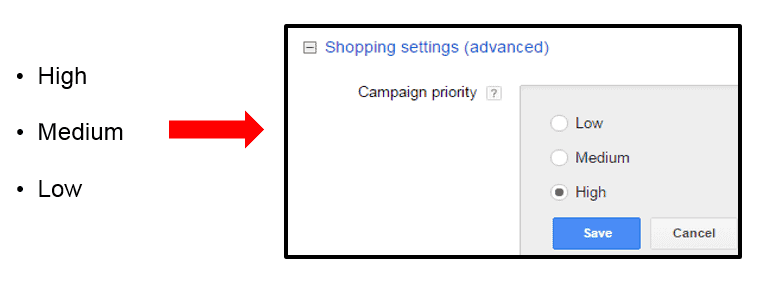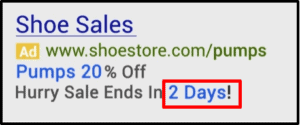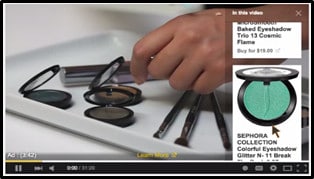The holiday season is just around the corner! This checklist was inspired by a recent analysis of two retail brands, and is meant to provide you with some of the best practices that we have found helped get the most out of this season. Here are some recommendations:
1. Set your Campaign Goals
Make sure to set your goals for the holidays and review them with the client. Sometimes the client has predetermined goals for the holidays that might be unrealistic. In our analysis, Brand #1 had very aggressive revenue goals for this holiday season compared to last year’s targets. Brand #2 also had very aggressive revenue goals compared to last year’s targets, but these were more feasible given the brand’s current year performance.
2. Review Your Holiday Season Performance for the Previous Year
Make sure to get the most out of the current season by reviewing your previous year’s holiday season performance. This is extremely important in order to target areas of improvement. Here are some examples:
- Brand #1 and #2 only ran search campaigns last year. For this holiday season, we suggested to also consider display and video campaigns as a way to increase brand and promotional awareness, which will support our paid search efforts.
- Neither brand invested on Non-Brand campaigns in paid search last year. Non-Brand campaigns have proven successful in driving customer acquisition and initiating the conversion path; therefore, we suggested to include them and evaluate their performance based on first-click attribution.
3. Consider Display Advertising and Remarketing
These type of campaigns are great to support promotional awareness and complement efforts in paid search. We found that when display campaigns were active for Brand #1 during the previous holiday season our overall ROAS for Brand campaigns increased.
Remarketing will help you reach all those customers that previously visited your website but did not complete the purchase. If possible, make sure to offer them an extra benefit, like a special discount or promo code to encourage them to buy.
4. Analyze Peak Activity Dates
This is key to the overall strategy as it shouldn’t be assumed that peak activity dates will be the same for all brands or categories. In our analysis, activity peaked during the week of Black Friday and Cyber Monday, as expected; however, the highest converting days varied by brand. We suggest analyzing which specific weeks and/or days have the highest activity for each of your brands.
It is important to look at your holiday activity starting in October and ending in January-February, since you can find good insight during the first months of the year where aggressive season sales also occur.
- Brand #1 activity started increasing at the beginning of November; however, there was an important lift during the second week of October. Activity peaked again during the last week of November and the first two weeks of December, but very interestingly, we found that there was an increase in activity in mid-January, probably due to aggressive promotions.
5. Review Performance by Device
Performance by device has been changing significantly during the last few years, especially for mobile. Mobile activity in paid search has increased dramatically in 2015, suggesting the importance of paid search presence in mobile devices. In the retail industry, showrooming is a very important factor; therefore, brands should strive to be present on mobile search at all times during their highest converting days.
Even when, as part of our paid search best practices, we lower bids with mobile bid adjustments due to lower conversion rates than laptops and tablets, we suggest having a stronger presence on mobile for your Brand campaigns during the holidays. This means ensuring top positons with optimal bids, depending on how flexible your budget is.
6. Use Advanced Segmentation for Google Shopping Campaigns
Brand vs Non-Brand Segmentation
On shopping campaigns you bid on products and not on keywords, making this segmentation basically impossible; however, you can use negative keywords in order to segment your campaigns into brand and non-brand, and bid accordingly. (More detailed blog post about this to come)
Set Priorities in Campaigns
In Adwords, you can choose between three different types of priorities to implement to your campaigns:

This will help you prioritize the products you want to sell more, regardless of bids. A high priority campaign and low bids would override a low priority campaign with high bids.
7. Test, Test and Test Your Ad Copy
Make sure your ads display the correct messaging and reference your unique promotions (why should a customer choose you over your competitors).
Use Ad Customizers
We recommend the use of Ad Customizers only for ongoing promotions where prices or discounts are the only variables that change constantly. Remember that ad customizers are not suitable for ads where the entire message needs to change.
The use of ad customizers will help you save time and avoid mistakes, by working with ad templates where you can input variables such as price, discounts, countdowns, etc. For example, leverage ad customizers for dynamic countdowns during Black Friday and CyberMonday:

8. Test Your Landing Pages
Review your landing page performance constantly. We recommend to do it at least every 2 weeks. This allows you to identify if you are sending your traffic to a dysfunctional landing page due to unexpected changes in the website’s structure. It will also give you more visibility into which URLs are working and which aren’t by measuring metrics, such as conversion and bounce rates. Use the Destination URL report in Adwords, but make sure that all metrics are specific to each URL without the influence of metrics from campaigns or ad groups.
9. Review Your Ad Scheduling
Consider reviewing the ad schedules for all your brands. You can compare them to the previous year’s data to give you a more detailed view, but don’t forget to consider the entrance of new competitors to the market.
Let ads run at all times. During the holiday season, people also tend to do searches after midnight hours. Still, consider having positive bid modifiers for peak hours or for when competitors are bidding higher so your average position is not bumped down by their bid.
Remember to segment by hour of the day so you can get better insights on what hours you should focus on (the hours where you generate more sales!).
10. Consider Bid Modifiers by Location
Analyze location performance on your targeted areas and set a specific bid modifier. You can segment by country, region or state, city, and if there is a particular location that is getting positive performance, implement a positive bid modifier there.
This segmentation can also be useful when targeting specific products. For colder regions, consider bidding higher for jackets, sweaters and winter gear in general, whereas in warmer regions, you should bid higher for summer or lighter clothing.
11. Monitor Consistently the Competitive Landscape
It shouldn’t come as news that you need to monitor your competitor’s activity on a regular basis. However, during the holiday season, competitors tend to be more aggressive, which affects the performance of your campaigns. You can use different reports and tools to better identify them:
- Ad Preview Tool – also useful to do benchmark for new ad copies
- Auction Insights – will let you know how aggressive your competitors are behaving and if there are new ones participating in the auctions
- VPN – if you want to be really sure of how competitor ads are showing in other markets, you can use a VPN (Virtual Private Network), as sometimes results showing in the preview tool are not entirely accurate
Use Google’s bidding strategy “Target Outranking Share” to ensure outranking specific competitors during peak weeks. This will dynamically increase bids to help outrank another domain’s ads in SERPs while not surpassing the max. cpc that you set.
12. Make Sure to Leverage Google’s New Features
Google has released a lot of new features that might be useful for retailers:
- Customer Match – this will allow to leverage your email lists to target your loyal customers and/or similar audiences. It can be used in the Search network, Gmail and YouTube. See how to create a customer emails list here.
- YouTube Product Ads – this feature allows you to reach customers by showing your ads in YouTube videos.

Online Shopping will have a stronger presence these holidays compared to previous years. Almost 50% of all purchases are predicted to be online, so don’t wait until the last minute to implement your strategy. Plan ahead of time and make sure to include all these tips to ensure a great performance for your PPC campaigns.
By: [post_authors_post_link]

